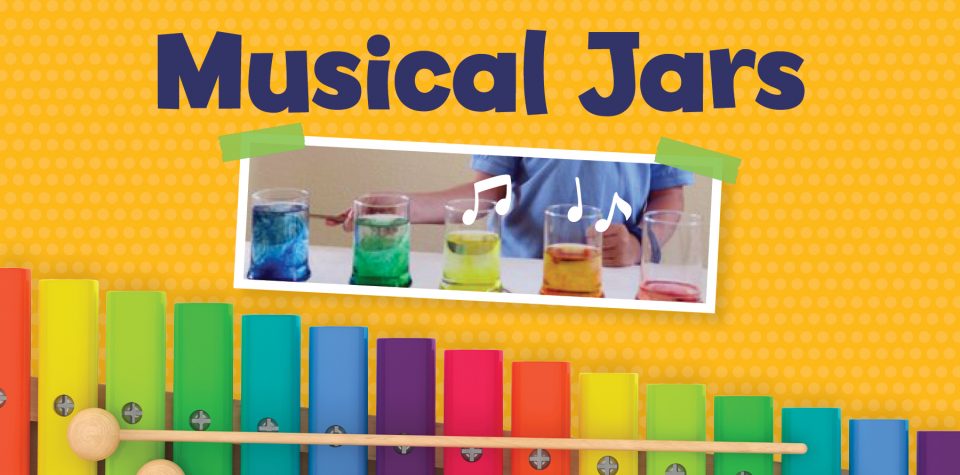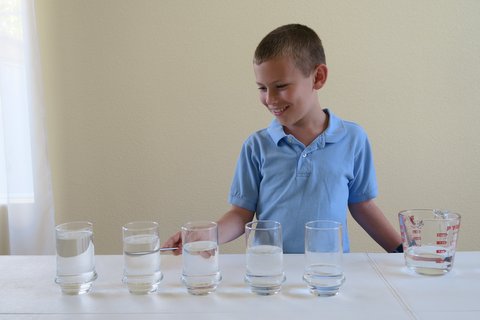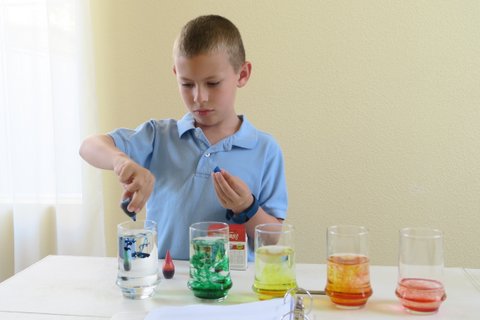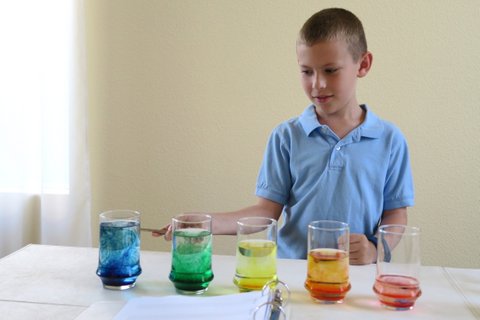
Musical Jars and the Science of Sound
Our everyday world is full of sounds. But have you ever stopped to think about what sound actually is? Sound is the energy that things make when they vibrate. These vibrations force the air around them to vibrate too, making waves, until eventually even the air inside your ears begins to vibrate. Your brain interprets that sound energy into words, music, or other noises. The volume and the pitch of the sound you hear depends on the source and how much energy it produced.
Sound waves travel pretty quickly. When someone speaks to us, our ears feel the vibrations and our brains interpret them into words almost instantaneously. But sound can only travel to our ears if it has something to travel through, such as air, water, or other materials. In space, where there is no air, sound can’t travel!
Experiment with sound by making your own musical jars.
You will need:
- 5 identical glasses or jars
- water
- a rod or dowel
- food color (optional)
What to do:
Line up the jars on a flat surface. Gently tap each with the rod. They should each make the same musical tone. When you tap a jar, it begins to vibrate. Those vibrations travel through the air and into your ear. Your brain interprets the wave as a musical note.
Gently tap one jar, then immediately touch it with your other hand. What happened? By touching the jar, you stopped the vibration. Without vibration, there is no sound to hear!
Fill the first jar most of the way up with water. Fill each of the remaining jars with less water than the glass before it.
Tap on each jar again. What do you notice? Each jar now produces a different tone. The empty jars made the same tone as each other, so the different water level causes the tones to change. This is because the sound waves are altered as they pass through the water. What is the relationship between the amount of water in the jar and the pitch of the tone? You should notice that the more water in the jar, the lower the pitch. The jar with the least water has the highest pitch.
Now it’s time to tune your jars. Add or subtract water, a little bit at a time, from each of your jars until the tones sound like a scale. Your ears will probably tell you if a note is way out of tune!

Once your jars are in tune, you can add a few drops of food color to the water. No need to stir- the swirling colors are really pretty and will eventually mix themselves thoroughly.

Now start playing! You can create beautiful music with only five notes. Try to figure out simple songs like Mary Had a Little Lamb, Twinkle Twinkle Little Star, and Hot Cross Buns.

You can also compose your own songs! If you want to be able to play one of your songs again, just use crayons to write down the colors of the notes as you play them.
Take it further:
- Add extra jars to create a full musical scale. This will allow you to play many more familiar songs.
- Try using different materials to tap a jar. Does a plastic rod create a different pitch from wood or metal? Why?
- Switch the glass jars to ceramic mugs. Does that make a difference? How about plastic cups? Paper cups and foam cups don’t work. Why?
- Does the liquid in the containers have to be water? What happens when you try something like vegetable oil? Look around for other liquids to try.
Looking for more inspiring experiments for kids? Spark new discoveries with our award-winning science subscriptions and activity kits.
